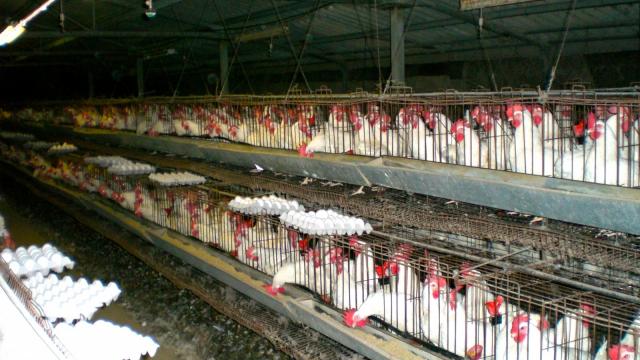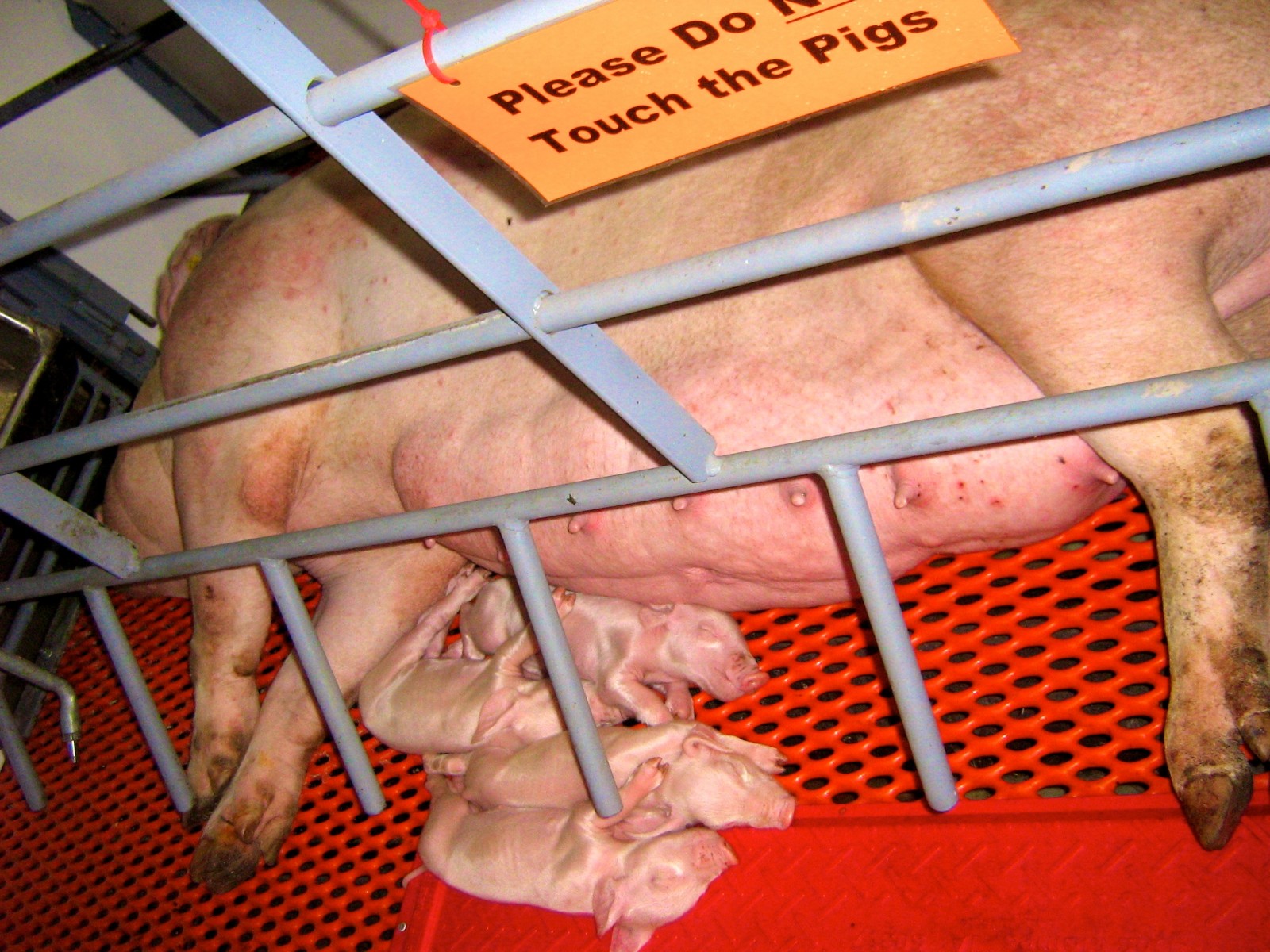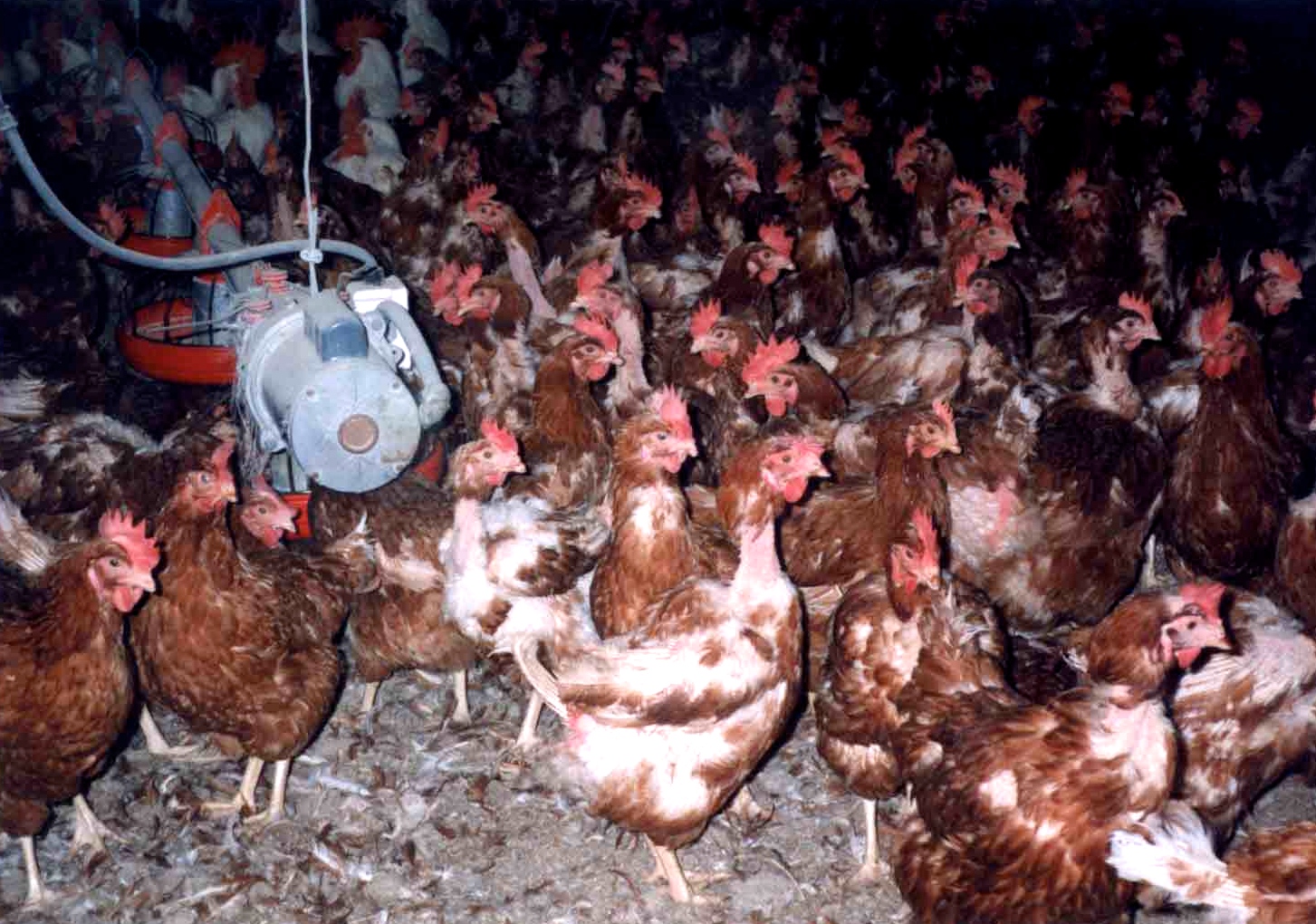
This is the first in a series of articles on how to boycott factory farms. Following the introduction, this first installment focuses on how to find alternatives to the milk produced by large CAFO (Confined Animal Feeding Operations) dairies.
There are plenty of reasons to boycott factory farms, including the top two: your health and animal welfare. But the big-picture reason is this. The only way to feed the world and restore climate stability is to restore efficiency to our food system.
When we were hunters and gatherers, eating animals was inherently efficient. Animals ate the grasses and shrubs we couldn’t digest and turned them into meat, milk and eggs that we could eat.
Today, our factory farm food system is inherently inefficient. We take food and farmland that could be used to feed many people and use it to feed animals that feed fewer people. This all started when we enclosed the commons, started plowing up the pastures and planting crops on hunting grounds.
The trend continues today as we continue to replace rangelands with millions of acres of genetically engineered grains destined for factory farms, where we cram millions of animals into confined spaces, under unnatural, unhealthy and inhumane conditions.
We must end factory farming. And the only way to do that is to boycott foods produced from animals raised on factory farms. That can be challenging given how dominant factory farming has become. But it’s possible.
Buy direct from farms. One of the best ways to avoid food from factory farms is to buy direct from farms. You can connect online with farmers markets, subscription-based Community Supported Agriculture (CSAs), buying clubs and farms at:
What to look for in grocery stores. When it comes to meat, milk and eggs, choosing USDA Organic is a good way to avoid the worst factory-farmed animal products in grocery stores.
But just because a product is certified organic, doesn’t guarantee that it’s 100 hundred percent free of synthetic ingredients or non-organic ingredients, nor does it guarantee the highest level of animal welfare or the best pasture standard. You have to read the labels.
If you want to know that your food comes from farms that provide the highest level of animal welfare, you’ll want to look for organic, grassfed foods that are also:
• Levels 4, 5 or 5+ in the Global Animal Partnership’s 5-Step Animal Welfare Rating Standards
For more detailed information, check out the Animal Welfare Institute’s “Consumer’s Guide to Food Labels and Animal Welfare.”
If you want nutrient-dense food from animals that are 100 percent grass-fed, you’ll want to carefully vet organic companies’ pasture claims. There is no legal standard for "pastured." The term implies that the animal has been raised primarily outdoors, on live pasture.
But the quality of a pasture can range from land that consists of a mixture of living nutritious grasses, legumes and a variety of plant species, to land that is poorly managed with respect to soil and water quality, and consists primarily of dirt and gravel, with no living plants.
Products that are American Grassfed Certified, in addition to USDA Organic, guarantee the highest pasture standards and nutrient density.
Here’s something else to remember when shopping for factory farm food alternatives. Yes, they may cost more at the checkout counter. But rather than judge the value of food as dollars-per-ounce, think of the value of food as nutrition-per-calorie. Food from factory farms might be cheaper, but not when you look at how much more nutrition you get from organic and grass-fed alternatives, or plant-based superfoods. Here’s a great list of foods ranked by nutrient density. It may surprise you!
Don’t be a meat-eating glutton. In addition to shopping for alternatives to factory farm foods, you can also help boycott factory farms by cutting back on meat. Being a healthy omnivore means eating more vegetables, fruits, grains, beans and nuts, and seeking out super-foods. As Simon Fairlie, so effectively summed it up in, “Meat: A Benign Extravagance,” animal products, produced in sustainable, high-welfare systems, can be harmless, but we have to treat them like a luxury purchase.
There’s an argument to be made that factory-farm meat may be a luxury we can’t afford to do without. As Judith Schwartz explains in Cows Save the Planet: And Other Improbable Ways of Restoring Soil to Heal the Earth, we need animals to graze on pasture, in order to bring carbon down from the atmosphere and trap it in the soil. That said, there isn’t space enough on this planet for the billions of food animals currently confined in factory farms to be replaced with pasture-raised counterparts. Ending factory farming means eating less meat.
Try going vegan every now and then. Going vegan is probably the only sure way to avoid food from factory farms when you eat out at restaurants. If you want to try vegan at home, there are plenty of nutrient-rich plant-based superfoods, and much evidence supporting the health benefits of a vegan diet. Resources include:
• Physicians Committee for Responsible Medicine
Just be careful. Your health is as important as the welfare of animals and the sustainability of agriculture. If you care about human health, you can’t just replace milk, meat and eggs with fake milk, meat and eggs. Being a healthy vegan means eating more vegetables, fruits, grains, beans, and nuts, and seeking out superfoods.
In the coming weeks, we’ll provide buying guides for factory farm-free staples, including what to buy, where to buy it, and what it costs. In the meantime, please explore the resources above. Let’s shut down the factory farms and support and expand an ethical, sustainable, healthy and delicious food system!
Alexis Baden-Mayer is political director of the Organic Consumers Association.
3 WAYS TO SHOW YOUR SUPPORT
- Log in to post comments













